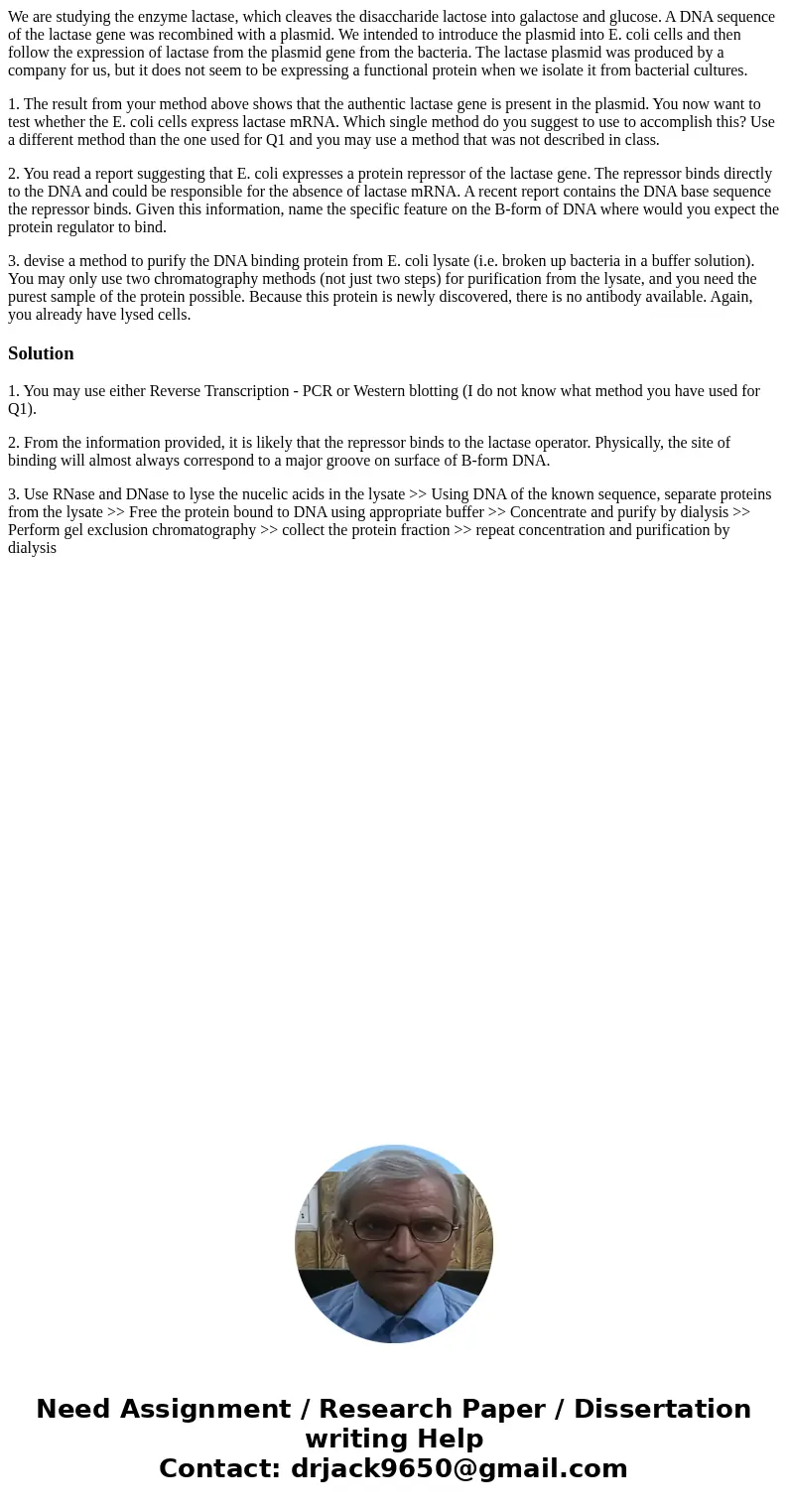We are studying the enzyme lactase which cleaves the disacch
We are studying the enzyme lactase, which cleaves the disaccharide lactose into galactose and glucose. A DNA sequence of the lactase gene was recombined with a plasmid. We intended to introduce the plasmid into E. coli cells and then follow the expression of lactase from the plasmid gene from the bacteria. The lactase plasmid was produced by a company for us, but it does not seem to be expressing a functional protein when we isolate it from bacterial cultures.
1. The result from your method above shows that the authentic lactase gene is present in the plasmid. You now want to test whether the E. coli cells express lactase mRNA. Which single method do you suggest to use to accomplish this? Use a different method than the one used for Q1 and you may use a method that was not described in class.
2. You read a report suggesting that E. coli expresses a protein repressor of the lactase gene. The repressor binds directly to the DNA and could be responsible for the absence of lactase mRNA. A recent report contains the DNA base sequence the repressor binds. Given this information, name the specific feature on the B-form of DNA where would you expect the protein regulator to bind.
3. devise a method to purify the DNA binding protein from E. coli lysate (i.e. broken up bacteria in a buffer solution). You may only use two chromatography methods (not just two steps) for purification from the lysate, and you need the purest sample of the protein possible. Because this protein is newly discovered, there is no antibody available. Again, you already have lysed cells.
Solution
1. You may use either Reverse Transcription - PCR or Western blotting (I do not know what method you have used for Q1).
2. From the information provided, it is likely that the repressor binds to the lactase operator. Physically, the site of binding will almost always correspond to a major groove on surface of B-form DNA.
3. Use RNase and DNase to lyse the nucelic acids in the lysate >> Using DNA of the known sequence, separate proteins from the lysate >> Free the protein bound to DNA using appropriate buffer >> Concentrate and purify by dialysis >> Perform gel exclusion chromatography >> collect the protein fraction >> repeat concentration and purification by dialysis

 Homework Sourse
Homework Sourse